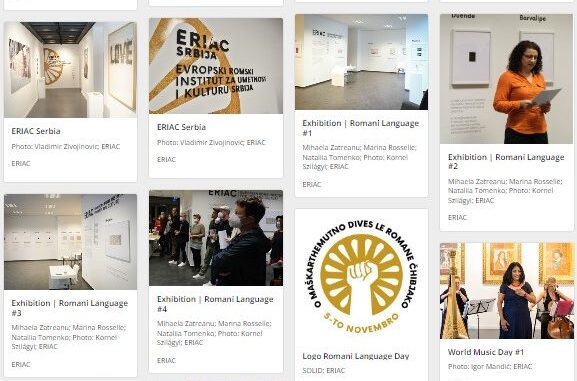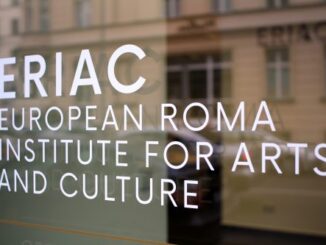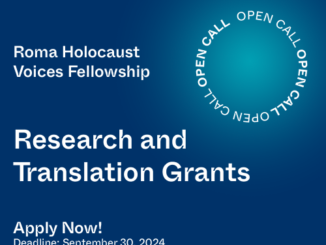
WEAVE – Widen European Access to cultural communities Via Europeana project aims to develop a framework to link the tangible and intangible heritage of cultural communities, safeguarding the rich and invaluable cultural heritage which they represent.
In particular, the project will aggregate over 5,000 new high-quality records to Europeana, and showcase these collections in a set of engaging editorials and a virtual exhibition. The project will carry out several capacity-building activities to develop a closer connection between cultural heritage institutions (CHIs), minority cultural communities and Europeana.
Additionally, WEAVE builds upon the results of CultureMoves and 50sKaleidoscope Generic Services Projects. It is developing open and reusable tools that will employ a mix of AI, machine learning, natural language processing, big data analysis, and innovative interface engineering. The toolkit will allow the management of annotations, semi-automatic recognition of specific gestures and movements and visualisation of performances and 3D models.
Furthermore, the project will demonstrate how the WEAVE Toolkit can be used by CHIs to better promote collections that would otherwise remain hidden, in educational and destination tourism contexts.
Project partners
The consortium created for WEAVE is properly balanced and composed of partners with complementary expertise and well-aligned organisation priorities that match the objectives of the project and also understand Europeana, its principles and strategy.
The consortium perfectly covers the broad mix of stakeholders that are needed to successfully undertake such a project: cultural community representatives, content holders, innovative SMEs as technology providers, research organisations focused on ICT and scholars working in the area of cultural communities and heritage, complemented with an accredited Europeana aggregator and the Europeana Foundation.
Thus consortium partners span the entire value chain including partners with long-term expertise in the collection, preservation and curation of intangible cultural heritage and the heritage of cultural communities at risk, some of which also have academic relevance in the interpretation and consideration of the value of these resources in the landscape of European heritage.
As an added value, all the partners are included in wide networks of cultural heritage communities both locally and internationally, thus offering the opportunity to easily reach bigger and smaller cultural institutions for project awareness, dissemination and network-building.
- IN2 Digital Innovations GmbH – Germany (Coordinator)
- European Roma Institute for Arts and Culture e.V. – Germany
- PHOTOCONSORTIUM – International Consortium for Photographic Heritage – Italy
- Coventry University – United Kingdom
- CRDI – Ajuntament De Girona – Centre De Recerca I Difusió De La Imatge – Spain
- PédeXumbo – Associaçãon para a Promoção da Musica e da Dança – Portugal
- TOPFOTO – Topham Partners LLP – United Kingdom
- ARCTUR d.o.o. – Slovenia
- Universidade NOVA de Lisboa – Portugal
- ThinkCode Ltd. – Cyprus
- Katholieke Universiteit Leuven- Belgium
- Stichting Europeana – The Netherlands
Cultural communities’ engagement in the age of digital Cultural Heritage
Using and extending the participatory LabDay methodology developed by Coventy University (COVU) in the previous CultureMoves Action (2017-EU-IA-0171), this task is responsible for involving different cultural communities connecting them to CHIs and Europeana through virtual and physical events. At least one event will be organised by each of the partners representing one of the cultural communities involved in the Action (i.e. Roma community, traditional Portuguese dance and culture, historical dance community, daguerreotype photography community, Slovenian CH community).
ERIAC engaged with content contributors to provide valuable samples of Roma tangible and intangible heritage artefacts that will be included in the Europeana collection.
The items will be selected based on the following criteria
- relevance and/or historical importance; authenticity (produced by Roma)
- quality of digitalization (meeting the standards);
- possibility of clearing the copyrights.
ERIAC members will be invited to propose items to be included while the final selection will be supervised by ERIAC management (with experience and expertise in curating). An emphasis will be placed on contemporary objects, especially examples of contemporary art produced by Roman artists, to counterbalance the dominant folkloric/ethnographic, and often a stereotypical representation of Roma people.
This is relevant due to the following reasons:
- a dominant part of the current items in Europeana collections website labelled as “Roma/Gypsy” include items which are either produced by non-Roma (for example, ethnographic photographs of the Roma) or represent an imagined representation of the Roma (for example, works of art which fetishize/exotifies the imagined “Roma”, as a representation of an archetype/stereotype);
- contemporary artistic practice is developed by Roma people themselves, giving an authentic and subjective representation of Roma identity and culture;
- as Europeana collections website include much fewer objects of contemporary art, these newly aggregated items will provide an added value to the entire collection.
PROJECT OUTPUTS
THREE LABDAYS
- Roma Self-representation in the History of the Venice Biennale – 11 October 2021
In the past there have been various exhibitions of Roma culture and contemporary art in the frame of Venice Biennales, namely in 2007, 2011 and 2019, which represent the greatest efforts ever made by Roma to present Roma art in an international stage in the center of contemporary cultural diplomacy. But in the lack of collecting, archiving and non-existent museum institutions to house artefacts, once these Roma exhibitions are dismantled, their histories become vulnerable and their achievements carry on only as interpersonal – and later transgenerational knowledge, which slowly – with the means of digital remembrance – constitute a new form of intangible cultural heritage. The Roma exhibitions are not connected to the prestigious locations, and known spaces of the Venice Biennale, but to the non-spaces of digital-discussions, oral histories, letter and in-person exchange, archival documents and digital exhibitions. Read more.
- Second International Conference – “Safeguarding our Romani Language” – 5 November 2021
On November 5, the World Day of Romani Language, the European Roma Institute for Arts and Culture (ERIAC) organized the Second International Conference “Safeguarding Our Romani Language”, in partnership with the Council of Europe and the University of Graz.
The conference brought together experts, practitioners and legislators who participate in the protection and promotion of the Romani language. The aim of the event was to oversee the status of Romani, to discuss the issues of language preservation, the topic of transnational harmonization, as well as the practices in Romani language education.
ERIAC goal is to establish cooperation for language harmonization at an international level, to design future strategies for preserving the language heritage, and to fulfil the general need in Europe for Romani language education. This year we put special emphasis on the theme of heritage preservation involving digital tools. The conference was held online, providing a platform for international participants from various countries. Special significance will be given to the use of Romani during the event. Read more.
- The Role of Artist Residencies in the Promotion of Roma Contemporary Art – 19 November 2021
Since 2020, the joint programme of Villa Romana Florence and ERIAC has been the premier residency for artists of Roma descent. During our webinar, it was discussed the role of art residencies in advancing individual careers and the promotion of marginalised cultures. The cultural managers behind the trailblazing initiative, Angelika Stepken of Villa Romana and ERIAC’s Timea Junghaus were joined by the 2021 artists-in-residence L´uboš Kotlar and Norbert Oláh, to discuss the pros and cons of this kind of positive action targeting ethnicity in the field of arts and culture.
ERIAC collection in Europeana is visible here.
Read more Here
Källa: Eriac
Redaktionen
redaktionen@dikko.nu
Att vara en oberoende tidning kostar pengar så vill du hjälpa oss med att betala vårt fika får du gärna swisha en slant till 123 242 83 40 eller bg: 5534-0046
Vill du annonsera eller sponsra, synas eller höras i våra media?
Kontakta oss på redaktionen@dikko.nu
eller ring 0768 44 51 61
IBAN: SE19 9500 0099 6042 1813 4395
BIC: NDEASESS




